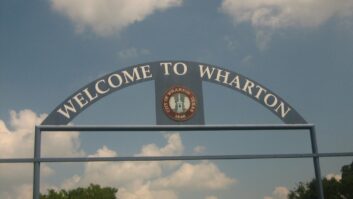Opinions on the AM radio revitalization effort have come from all quarters: listeners, large broadcast radio groups, broadcast associations and radio insiders with special perspectives on the debate.
One informed observer is Al Kenyon, who urges the commission not to reduce co-channel nighttime skywave protection for Class A AM stations.
Kenyon brings both engineering and alerting experience to the discussion. An engineer with more than 50 years of experience, he joined FEMA IPAWS as a project manager and engineer in 2010 and has broadcast alerting and warning experience with several state emergency agencies. He served on several FCC committees, including the FCC EAS National Advisory Committee and FCC Media Security and Reliability Advisory Committee. He filed comments as an individual.
Kenyon pressed the commission to consider that Class A AM Primary Entry Point (PEP) stations are a unique resource, and that the commission’s proposal to reduce co-channel nighttime skywave protection for Class A AM stations — from the current 0.5 mV/m-50 percent skywave contour to the proposed 0.1 mV/m groundwave contour — will significantly reduce available nighttime reach of the Class A stations in the PEP system.
FEMA’s PEP system is a group of radio stations and satellite program service providers that have made voluntarily commitments to serve as the top level of the Emergency Alert System, Kenyon noted.
The broadcast portion of the PEP system consists of 25 Class A AM stations, 36 Class B AM stations and 12 FM stations. Together they put a listenable signal over more than 90 percent of the U.S. population during daytime hours and 100 percent of the U.S. population during nighttime hours.
FEMA is in the process of equipping PEP stations with electromagnetic pulse-protected generators, transmitters and program origination equipment to enable stations to provide service following an emergency event, Kenyon wrote. To date, 37 PEP stations have FEMA resiliency packages installed at their transmitter sites.
“Many PEP stations are equipped to survive events ranging from solar flare to a man-made EMP event, either of which could damage the power grid or cripple many alternative information sources such as broadband through disruption of first and last mile connectivity,” Kenyon wrote.
Increasing authorized noise and interference levels on Class A channels will cause significant service reductions to the Class A AM PEP stations, Kenyon believes, while offering limited interference-free service gains for stations that might benefit from the proposed change to Class A skywave protections.
“Changing the rules will not change the physics of nighttime medium wave propagation,” he stated. Current protection standards acknowledge that the arrival of skywave signals from Class A AM stations is a given; and a rule change that decreases Class A AM skywave protections could create a false impression that there is a means of precluding the arrival of a Class A station’s skywave signal so that it will not affect a distant local broadcaster.
Kenyon urged the commission not to reduce co-channel nighttime skywave protection for Class A AM stations. “Such action will cause permanent irreversible damage to a currently unfashionable but nonetheless valuable resource and will limit the effective reach of the PEP system.”









